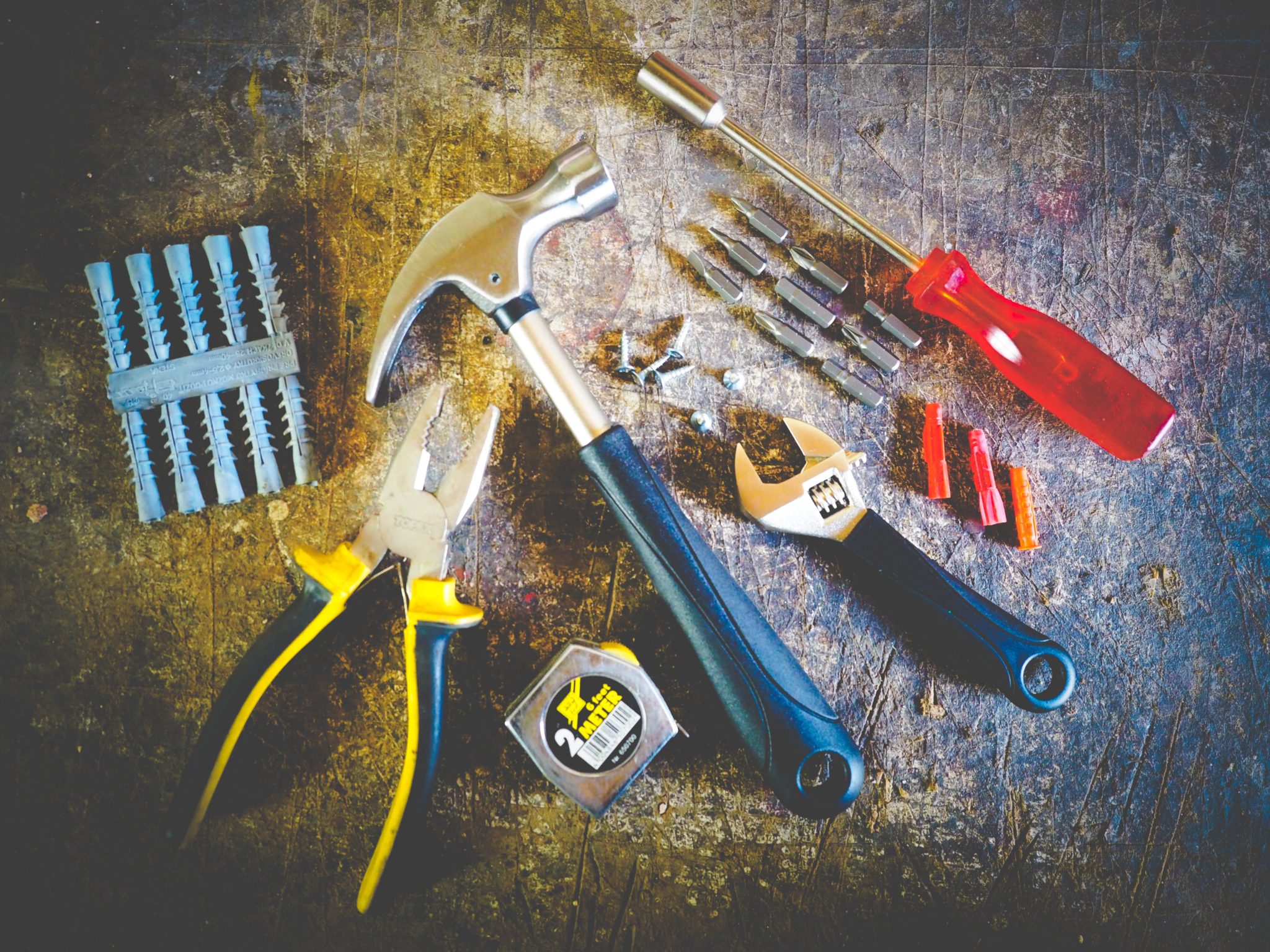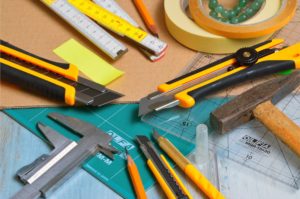 Hand tools refer to helpful tools that don’t require electrical power or a motor but instead are powered by human strength. They are generally essential, must have items needed to complete every day tasks. They include tools such as wrenches, clamps, hammers, screwdrivers and even scissors, flashlights and extension cords.
Hand tools refer to helpful tools that don’t require electrical power or a motor but instead are powered by human strength. They are generally essential, must have items needed to complete every day tasks. They include tools such as wrenches, clamps, hammers, screwdrivers and even scissors, flashlights and extension cords.
As owning a home can be expensive, being able to do some basic repair jobs yourself will save you money in the long run by investing in a few tools to get those simple jobs done. Of course hand tools can be used by carpenters in the construction industry too who know the value of the different types of hand tools and their uses.
Really the list of all the different types of hand tools could be endless. We have decided to comment on the top 15 most common hand tools most regularly used around the house, in construction and for basic DIY. For tools primarily concerned with cutting – including hand tools and power tools, check out, Names of Woodcutting Tools.
Different Types of Hand Tools and Their Uses
- Knives
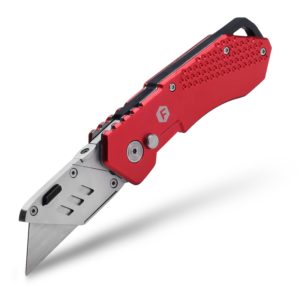
The type of knife we’re referring to here is not the kind you’ll use on steak. Moreover, we’re referring to those industrial grade knives every tool kit should contain. These are the sturdy and durable sort which are useful for opening cardboard boxes, letters, cutting tough materials or even removing old caulk between tiles in the bathroom. It is recommended for safety measures, that the knife blade is stored inside the casing when not in use.
- Scissors
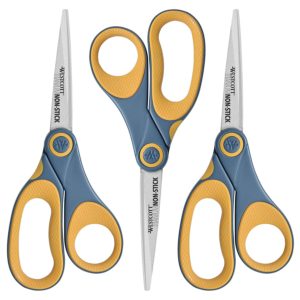
Again another basic tool that can be helpful for craft and other projects – including the ones the kids need help with. Scissors are multi-purpose tool. They are useful in so many scenarios and places including the kitchen, home office, laundry, a DIY job, wrapping presents, cutting all sorts of material, etc. Sometimes it is helpful to have different scissors for different jobs. For example, if you regularly cut meat with scissors then you may want to keep a separate pair for cutting fabric. And for safety reasons, the sort the kids use for chopping up play doh, will be a lot less sharp than the ones you’ll need for household DIY.
- Screwdrivers
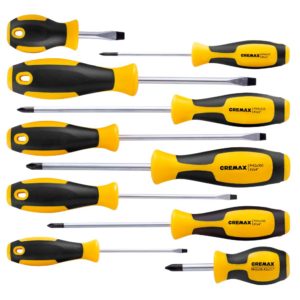
There are many different types of screwdrivers. It is one of the must-have tools in a household utility kit. They can be used to screw or unscrew nails on a vast array of surfaces, to assemble furniture, install light switches or to tighten hinges. Screwdrivers come with blades that vary in widths and lengths purposefully designed to suit the job. The handle can be made of high quality plastic to get a good grip which is essential for turning purposes. It is best to have a range of screwdrivers from Phillip’s head to flat head and from small to large so you won’t get caught out when you need to install replace the batteries on your torch or your child’s favourite toy.
- Hammers
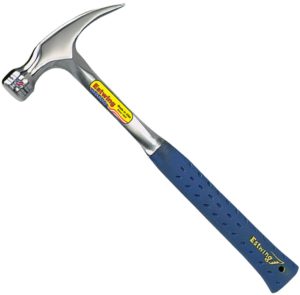
A hammer is a tool designed to produce force for particular purposes. For example, you may need to drive a nail, break an object or even forge metal. Hammers generally are set against a long wooden stick, attached to a block of metal. They should be reasonably heavy in order to be effective and create friction. It is important to get one that is too heavy for the user as it should be operated without any difficulty. When choosing one, consider how it will feel after extended use and whether it is the right size for a broad range of jobs you may do. I personally have a variety of different sized hammers as they’re relatively cheap and last the distance.
- Wrench
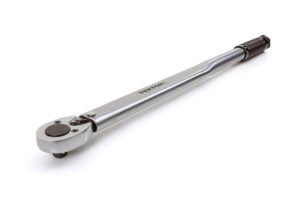
A wrench is needed when you want to grip and turn objects that is too difficult to do by hand. They come in handy for bike repairs when you want to loosen or tighten up nuts and bolts or assembling furniture. In the household and job sites, wrenches are also used in plumbing jobs to turn pipes. Just like hammers and screwdrivers, wrenches come in varying sizes and it’s important to choose the right one for the right purpose.
- Pliers
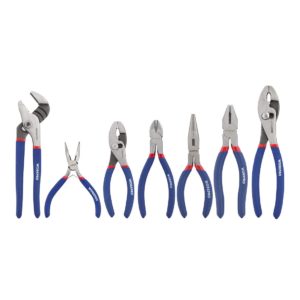
Pliers are another common hand tools used by professionals, home users and those into DIY. They are useful in both a workshop or at home.They can be used for straightening or bending wires, cutting or slicing wires, removing tiny needles or nails, or even just to hold something firmly without dropping it. Essentially they are designed to hold objects firmly, or to bend materials, and they can remove unwanted elements. It is recommended to use pliers with needle-nose ends and wire-cutting abilities to have dual functionality.
- Clamps
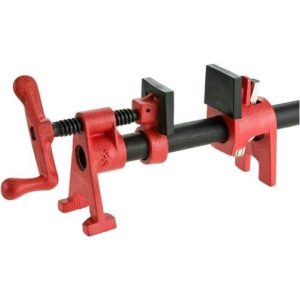
Essentially a clamp is a fastening device that you can use to secure and hold things tightly to prevent movement. They are usually used in to assemble furniture, repair jobs or any DIY projects. They also help with the separation of inward applications. Clamps generally are used for temporary purposes while you’re working on another job but they also can be permanent set in place when needed too.
- Flashlight
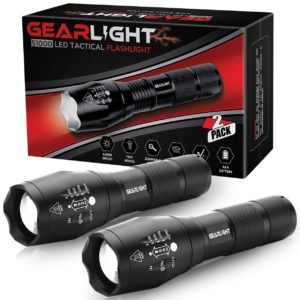
If you’ve ever had a power outage, you will know that one of the first tool you’ll reach for is a flashlight. Sometimes it can be one of those items you don’t really think about until you need one. You also don’t want to be in a position of trying to find one or batteries for it, while being in the dark. They only work with some kind of power so ensure batteries are up to date or keep your rechargeable one plugged in.
- Tape Measure
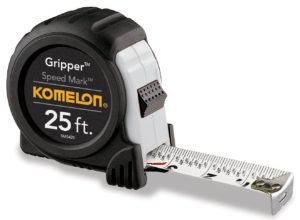
Tape measure is a hand-sized tool with measurement markings on it and a must have for every home tool kit. If you’ve ever needed to measure windows to see if those curtains will fit, you will be pulling out your trusty tape measure. It is recommended that you get one with at least 25 feet in case you have to measure the square footage of a room or some lengthy wood for your next project.
- Extension Cords
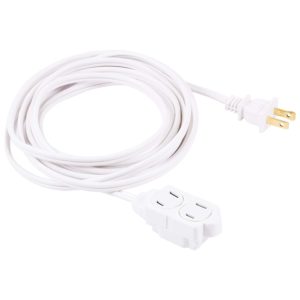
I remember when I was young and dad would say, ‘you can never have enough extension cords.’ When I got a place of my own, I remembered him saying that when I ran out trying to set up with surround sound system and tv in an awkward spot. They certainly come in handy when you need to plug in anything farther from the outlet that you have of cord available from your machine. While you don’t need to go nuts with getting too many of them, it is recommended you have ones of varying lengths and a heavy duty one for outside purposes.
- Duct Tape
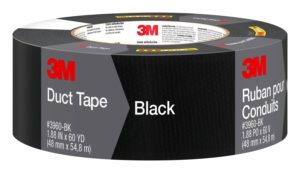
Is duct tape a tool? Well I guess that depends on your definition of tool. If you’re defining tools as something that assist with household tasks, then duct tape certainly fits the criteria. The tape is incredibly sticky and will stick to almost anything. It is heavy duty and made out of thick woven material. It can tear easily (it has to be removable) and although it can hold things in place, it is used for temporary purposes only as an interim measure and really not designed to last forever in place. Duct tape is so handy though if you need to cover holes in window screens, mend your vinyl sliding, or fortify split plastic.
- Pry Bar
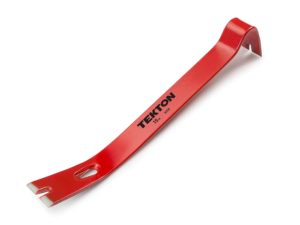
Pry Bars are used when you need help to pull difficult items out of tight spots. They have a long piece of heavy-duty metal with one flat end and one curved end. Both ends have V-shaped claws to help pull those tricky items out which have become stuck or are particularly heavy. If you’ve every come across a stuck door, a pry bar will come to the rescue and you’ll be glad you’ve got one.
- Putty Knife
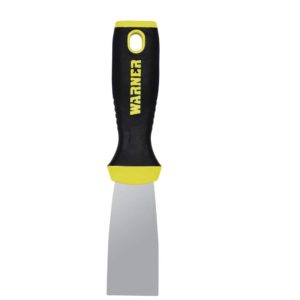
A putty knife is a specialized hand tool that has a straight blade. They can be used to glaze single windows, to work putty around the edges of panes of glass. A putty knife also comes in handy when applying drywall mud, filling cracks or even scraping paint off old furniture. Putty knifes are used to apply the putty and for smoothing it out with the same tool.
- Allen Wrenches
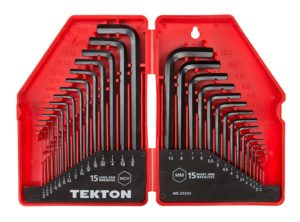
Allen wrenches also known as allen keys or hex keys, are a simple L shaped tool used to drive bolts and screws with hexagonal sockets in their heads. Most often particular furniture that needs assembling from a flat pack (Ikea anyone?) will need an allen wrench. I must admit I don’t always use one, but when it is a must have for assembling purposes, they are handy to have in your tool kit.
- Socket Set
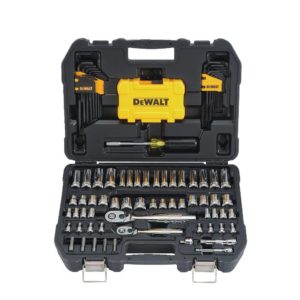
Sockets are used when working with nuts and bolts with the aim of getting things tight and secure. Just like most tools, it is best to have a range of different sizes to suit the job at hand. It is recommended also you get a ratcheting socket wrench so you can move the handle to continue tightening or loosening your bolt without taking the socket off and moving it each time.
Final Thoughts…..
At the end of the day, this list could go on and on. We choose the tools that each of us have as they’re all come in handy when you need them for particular purposes and allow you to do a bit of everything. Getting a few tools is important and you don’t want to be caught out in the dark, stuck behind a door that won’t budge or unable to assemble that Christmas present because you’re missing a low budget tool.
